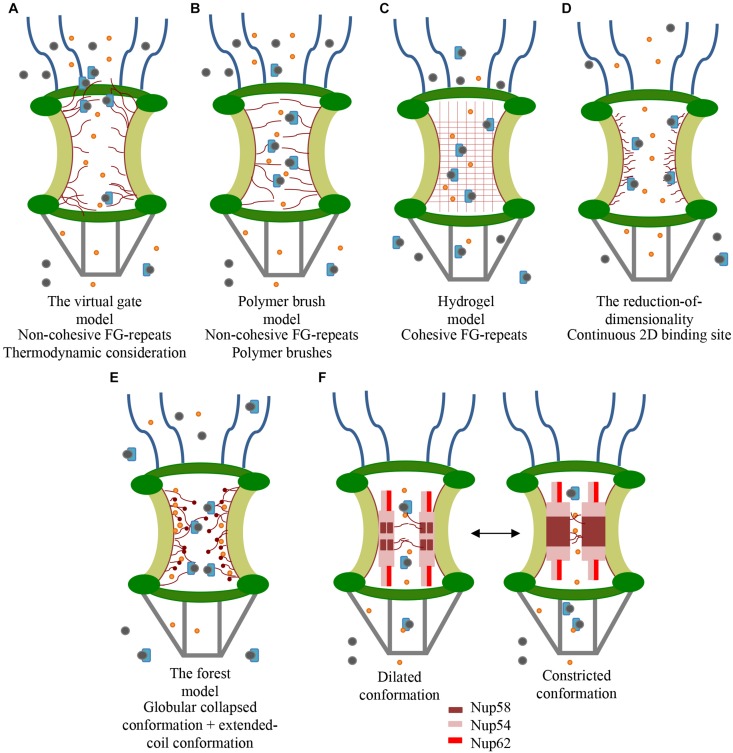FIGURE 2.
Proposed models for the FG-Nups distribution (red) in the central channel. Small proteins (orange) diffuse the channel passively. Only selected large cargoes (gray) can be transported across the channel by the nuclear transport receptor (light blue). (A) The virtual gate model envisions an entropic barrier, induced by FG-repeats dynamic configuration, which repeals unspecific cargoes. (B) The polymer brush model suggests bristles that reversibly collapse upon nuclear transport receptor binding. (C) The hydrogel model speculates that there is an homogeneous hydrogel mesh whose size excludes unspecific molecules passage. The high affinity of the nuclear transport receptor with the mesh would allow the passage of large selected molecules. (D) The reduction of dimensionality model supposes that a layer of FG-repeats lines the NPC interior forming 2D walk for and nuclear transport receptor. The axial channel allows for the passive diffusion of small molecules. (E) The forest model implicates both globular collapsed and extended-coil conformation for FG-Nups, which allow the passive diffusion of small molecules close to the scaffold (light green) and the active diffusion in the axial channel. (F) The central channel would alternate dilated and constricted conformation according to nuclear transport receptors’ concentration. While dilated conformation shows a single channel containing both Nup58 and Nup54, the constricted one consists of one homo-tetrameric module of Nup58 and two homo-tetrameric modules of Nup54.

